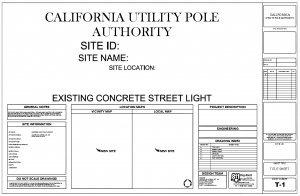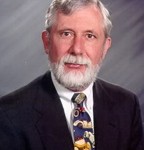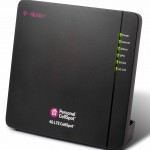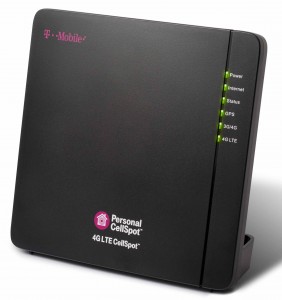 All of us at Telecom Law Firm wish a speedy and complete
All of us at Telecom Law Firm wish a speedy and complete
recovery to our friend, colleague, and always friendly opposition,
Stephen Garcia, Senior Manager of Government Relations at Crown Castle.
-Jonathan,
 Over the years, my staff and I have inspected a heck of a lot of cell sites on behalf of our cell site landlord clients for lease compliance purposes, and for local governments who ask us to perform the same inspections for permit compliance purposes.
Over the years, my staff and I have inspected a heck of a lot of cell sites on behalf of our cell site landlord clients for lease compliance purposes, and for local governments who ask us to perform the same inspections for permit compliance purposes.
Well, it turns out that somewhere about 30% to 40% of the time, the cell site (a) exceeds the size allowed in the lease; or (b) the cell site has been placed…or moved…to a location other than was was shown in the lease or permit; or (c) other mischief in the physical placement of the site has occurred.
We find these things when we use our very handy tool, a 100 foot tape measure. In fact, the photo is of one of our tape measures.
Why is this important? Over the last couple of years, we have recovered over $1 million in lease underpayments and increased cell site lease payments going forward. Are you giving away your property without proper compensation? For local governments, a cell site that violates a permit condition is most likely going to be excluded from Section 6409(a) and NOT subject to the mandatory approval required under that law. If you’re a local government planner or attorney, you KNOW how important that can be in your planning process.
I think this is such a powerful tool for a cell site landlord’s attorney, or an adviser-inspector to local governments that I start out most of my lectures advising landlords, their attorneys, and inspectors to go out and spend $20ish to buy a 100 foot tape measure, measure the boundaries of their cell site, and compare the actual measurements and cell site location to what’s shown in the lease or permit.
Recently, I received some very kind words about the power of the tape measure from a landlord’s attorney in Missouri, Brandon Moonier, Esq. of Thurman, Howard, Weber, Senkel & Norrick, LLC, who wrote saying:
I have taken many of Jonathan Kramer’s seminars and will keep going back for more. His insightful, practical and relatable approach to cell tower leases left me with valuable tools to use in my practice. Upon Mr. Kramer’s urging, one of the tools I now carry is a tape measure. This simple trick of measuring the leased area has made thousands of dollars for my clients. Bravo, Mr. Kramer. Please take your bow.
–Brandon T. Moonier, Esq., Partner of Thurman Law Firm, Hillsboro, Missouri.
Well, it’s always gratifying to hear that lessons taught are lessons being learned–and put to good use. Bravo, Mr. Moonier…now YOU take your own bow!
-Jonathan
Let the games begin. The “California Utility Pole Authority” (the alter-ego DBA of Mobilitie”) is showing plans with their DBA in big loud letters. Here’s an example:

I obtained this public record document from a local government in California and redacted the site-specific identifiable information, including the site identification of the carrier Sprint which remains a secret. The specific site design proposed in the project was, in my opinion, simply awful. Strapping external conduits on concrete poles? Drip loops? Really? I don’t know of any savvy California governments that would entertain such a design.
Hopefully, Mobilitie the California Utility Pole Authority will learn quickly that a rather poor site design that may play in other parts of the country won’t play here in California.
By the way, at last count today, Mobilitie has registered DBAs as the following:
Alaska Utility Pole Authority
Arizona Utility Pole Authority
Arkansas Utility Pole Authority
Florida Utility Pole Authority
Georgia Utility Pole Authority
Illinois Utility Pole Authority
Indiana Utility Pole Authority
Minnesota Utility Pole Authority
Missouri Utility Pole Authority
North Dakota Utility Pole Authority
Ohio Utility Pole Authority
Oregon Utility Pole Authority
Pennsylvania Utility Pole Authority
Rhode Island Utility Pole Authority
Vermont Utility Pole Authority
West Virginia Utility Pole Authority
Wisconsin Utility Pole Authority
Wyoming Utility Pole Authority
Now that’s a LOT of Utility Pole Authority, if you ask me!
-Jonathan
GLOBAL TOWER ASSETS, LLC sued the Town of Rome, Maine and its Planning Board for a denial of a cell site project.
Unfortunately for Global Tower, it sued after receiving the Planning Board’s denial. It did not take an appeal to the Town. The District Court hearing the case “held that the Planning Board’s denial of the application was not a final action that Applicants were entitled to challenge under the TCA.” (Internal quotes omitted.)
Global appealed to the First Circuit Court of Appeals, which sustained the District Court’s ruling against the tower company. The Court of Appeals said,
The appellants contend that the opportunity to bring an
administrative appeal should not prevent their TCA challenge from
going forward. But, in keeping with basic principles of
administrative law and the purposes of the TCA, we disagree. As
a matter of state law, the planning board’s denial may be reviewed
in state court only after the local board of appeals has exercised
its own independent review. As a result, we agree with the
appellees — the planning board and the Town of Rome, Maine —
that the planning board’s decision does not mark the end of the
administrative process and thus is not a “final action” for TCA
purposes.
If you’d like to read the Court of Appeals’ decision, CLICK HERE.
This reminds me of a case I was involved in many years ago when NewPath Networks sued the City of Irvine before completing the administrative process.
Jonathan
 Want to Sell your Cell Site Lease?
Want to Sell your Cell Site Lease?Our law firm helps landlords monetize (read: sell) their cell tower or cell site lease. It’s a very specialized area of land-use and technology law. There are times such deals make sense, and many more times when they don’t, but you should discuss your situation with a competent lawyer, AND a competent tax CPA.
There are many pitfalls in the standard boilerplate agreements provided by the big guys who buy-out leases. One of my favorite pitfalls is language in the agreement that says that upon termination of the buyout, the landlord has to accept as-is whatever agreements the buy-out firm put in place before the expiration of their contract or easement. Here’s the stinker: Let’s say you sell your cell tower lease for 30 years. During that time the original lease you sold expires, and the buy out enters into a new agreement for 100 years, taking a single payment of, say $1,000,000. In 30 years, you get the lease rights back, but find yourself with a cell site on your property for 70 years with NO INCOME and other bad terms. Yes, this really can happen to you if you’re not careful.
It’s common for a cell site lease sale to involve two documents: The contract selling the cell site lease to the buy-out firm, and an easement that allows them to enter into new agreements when your current lease expires. There are pitfalls in each, so if you’re not going to have a competent attorney help you, be very careful to think about how you might be stung by some of the more obscure terms in the agreements. Here’s a tip: The more words in a fully-justified paragraph, the more likely bad things are contained therein. It’s a old lawyer’s gambit. Presume that people won’t/can’t read and understand densely worded and long paragraphs. Stick the bad (for the seller) stuff in the middle of those paragraphs.
Don’t get bit. Need some help? Give me a call at Telecom Law Firm on 310-405-7333.
My mentor and colleague, John Pestle of the Varnum, LLP and I teach online lectures about wireless leasing matters. We have taught these wireless leasing

lectures for many years. Our lectures, taught through Lorman Education Services and the International Municipal Lawyers Association focus on key things a wireless site landlord should be thinking about when entering into a decades-long cell site lease, or modifying a lease already in effect.
The number one question we get from our lecture participants is always the same: ‘How much is the going rent?’
John has a splendid way of answering that question. He replies socratically asking the question: ‘How much is an acre of land worth in the United States?’
The point, of course, is that every parcel of land is unique; therefore there cannot be a single right answer. Rather, the more complete answer is ‘How much is a specific acre of land worth to the Lessee and Lessor.’ The potential cell site landlord has one opinion of worth, while the potential wireless carrier tenant has its own view.
The question is then, how to figure out the ballpark.
You will find precious few wireless lease rates on the web. A few years ago, John and I conducted a national survey of lease rates for cell sites on government properties, and the findings can be summarized as follows: Lease rates are all over the map, but there’s a general range between a few hundred dollars per month to over $5,000 per month. What makes one cell site only worth a few hundred dollars a month and another many times that amount?
Location, location, location and need, need, need.
A cell site lease in a rural area will produce lease income for the landlord than will one in a suburban area. A downtown lease will most often induce a higher rent than a suburban lease. An interstate-adjacent lease will induce a higher rent than some downtown rents. A financial district lease is somethings at the top of the pile as goes rent.
Here’s a kicker…
What is an exceptionally desirable area to lease in for one wireless company can be completely worthless for another wireless company. That is because each carrier deploys it coverage in a different manner.
Consider each company’s coverage needs to be a jigsaw puzzle of the same outside dimensions, say 10 miles by 10 miles, which each puzzle having different shaped pieces to fill in the coverage picture inside the edges of the puzzle. A missing piece for one carrier might already be found and inserted for another.
Here’s another kicker…
Lease rates can be completely disconnected from the size of the leased area. That’s because the wireless carrier will often try and grab land claiming that some elements of your land are less valuable to them than others. They might say something like, ‘we value the space occupied by the equipment cabinets to be more valuable than the space occupied by the tower, so you should, too.’ (By the way, don’t fall for this sucker punch. Your land is most likely to have a single per square foot or per cubic foot rent (yes, some leases have three dimensions specified of height, width and depth, rather than the more common two dimensions of width and depth).
There’s more to say about this, and I will, but for now I’ll leave you with this…
BEWARE of leases where the wireless carrier wants to occupy a 100 foot by 100 foot space (10,000 square feet). This rather magic number is far greater than I’ve ever seen a wireless carrier need for its own site, which can be from 250 square feet to about 700 square feet. So why would a wireless carrier want the extra many thousands of square feet? So that it can sublease your land to other wireless carriers, broadcasters, two-way radio companies, paging firms (yes, they still exist) and the like so that your tenant can collect and put that subrent in their pocket instead of your.
There are some very effective means to avoid the sublease trap. We commonly implement those means in leases we write for landlords to maximize the sublease rental income of the wireless landlords who rely on our expertise and experience.
jlk

I posted earlier today about my concerns regarding T-Mobile’s CellSpot. Beyond the concerns I wrote about, the Washington Post today has a very informative piece about how this device will metaphorically reach into the wallets and purses of T-Mobile subscribers who opt to install a CellSpot. An important read.
Now we know one way T-Mobile might intend to to fund its largess.
Washington Post: T-Mobile CellSpot – THINK TWICE
https://www.washingtonpost.com/news/the-switch/wp/2015/11/03/t-mobile-wants-to-turn-your-house-into-a-cell-tower-heres-why-you-should-think-twice/
I’m simply amazed by the press coverage T-Mobile is getting from the announcement that it will offer free 3G/4G/4G-LTE hot spots. As their Fact Sheet says, “the 4G LTE CellSpot ensures customers with a limited signal will now have strong, dependable voice and data coverage in their home or small business.”

All you need to do is request one of these babies from T-Mobile, give them $25 as a security deposit, plug it in to the wall, hook it up to the Internet, and away you go.
And that’s a problem.
You have to pay for T-Mobile’s coverage in two more ways. First, you have to provide your own power to operate the unit. In the grand scheme, that’s not much money each year. I’m guessing something like $15. Then you have to connect this baby to your own internet connection, which then takes some undisclosed portion of your Internet to provide connectivity to the CellSpot. Have a slow connection…or dial up…then you might have a problem.
What’s the real problem, here?
The way I see it, this big splash in the press is a tacit admission by T-Mobile’s that its company-provided radio frequency coverage AND capacity is far less than adequate, especially for in-building service areas. Viewed that way, T-Mobile’s announcement appears to be painting flaming red lipstick on a pink porcine. Still not pretty.
So who can connect to these units?
I’m not sure. Traditionally, carriers have required cell site hotspot users to register their phones so that only they can use the hotspot. If T-Mobile goes the other way and allows any T-Mobile user to connect via any CellSpot, then there’s another problem: T-Mobile’s customers installing CellSpots are now also funding connectivity for T-Mobile to provide service to third parties.
Hey? What the GPS light?
If you noticed the GPS light on the photo of the CellSpot, good for y0u. That’s because this unit needs to be near an window what it can have a view of the heavens. Huh? The unit needs to receive reliable GPS data from GPS satellites so that T-Mobile knows where the unit is located. More huh? The FCC requires that all wireless carriers be able to identify the location of 911 callers. To meet this federal obligation, T-Mobile collects GPS data from each customer-installed unit so that it can tie the GPS location back to a 911 caller. That’s actually a good thing, especially if you want the fire department to know where you’re calling from in the event of an emergency.
The bad thing for GPS (and cellular reception) is that many high-rise buildings effectively interfere with outside reception they are large grounded metal boxes with hybrid metalized window tint that substantially reduces signal strength. Here’s a very informative YouTube video that illustrates my point:
The bottom lines in my view:
With this, I suppose that T-Mobile’s slogan that it is the “Un-Carrier” might be amended to claim that it is the “Un-Coverage-Carrier.” And that’s too bad since I think many of T-Mobile’s service plan offerings are innovative.
Here are the CellSpot tech specs published on T-Mobile’s web site:
Chipset
CPU: Broadcom 4708
Switch: in Broadcom 4708
2.4Ghz radio: Broadcom 4360
5Ghz radio: Broadcom 4360
RAM 256MB
Flash 128MB
Network standard
IEEE 802.11a/b/g/n/ac
IPv4
IPv6
Data rate
802.11a: 6, 9, 12, 18, 24, 36, 48, 54Mbps
802.11b: 1, 2, 5.5, 11Mbps
802.11g: 6, 9, 12, 18, 24, 36, 48, 54Mbps
802.11n: up to 450Mbps
802.11ac: up to 1300Mbps
Antenna External antenna X 3
Operation frequency
2.4Ghz Channel 1~11
5Ghz band1: 36~48
5GHz band4: 149~165
Security
64-bit WEP
128-bit WEP
WPA2-PSK
WPA-PSK
WPA-Enterprise
WPA2-Enterprise
WPS support
Firewall and access control
Firewall: SPI intrusion detection,DoS protection, IPv6 firewall
Access control: Parental control, Network service filter, URL filter, Port filter
Management
UPnP, IGMP v1/v2/v3, DNS Proxy, DHCP, NTP Client,
DDNS, Port Triger, Universal Repeater, System Event Log
SNMP (tender project only, not for retail)
TR-069 ( tender project only, not for retail)
VPN support
IPSec Pass-Through
PPTP Pass-Through
L2TP Pass-Through
PPTP server
OpenVPN server
PPTP client
L2TP client
OpenVPN client
Applications
Download master
Support BT, NZB, HTTP, ED2K
Support encryption, DHT, PEX and magnet link
Upload and download bandwidth control
Image: JPEG
Audio: mp3, wma, wav, pcm, mp4, lpcm, ogg
Video: asf, avi, divx, mpeg, mpg, ts, vob, wmv, mkv, mov
QoS
WMM
User definable rules for IP/MAC/Port.
Upload and Download bandwidth management.
ACK/SYN/FIN/RST/ICMP with Highest priority
Guest Network
2.4GHz guest network x 3
5GHz guest network x 3
Printer Server
Multifunctional printer support (Windows only)
LPR protocol support
File server: Samba and FTP server with account management
PPTP VPN server
Network map
Traffic monitor
WAN connection type
Internet connection type : Automatic IP, Static IP, PPPoE (MPPE supported), PPTP, L2TP
3G/ LTE USB dongle
Android USB tethering
Support dual wan fail over and load balance
Ports
4 x RJ45 for 10/100/1000/Gigabits BaseT for LAN
1 x RJ45 for 10/100/1000/Gigabits BaseT for WAN
USB 2.0 x 1
USB 3.0 x 1
Buttons
WPS button
Reset button
Power button
Wireless on/off button
LED
PWR x 1
AIR x 2
LAN x 4
WAN x 1
USB x 2
OS support
Windows® 8.1
Windows® 8
Windows® 7
Windows® Vista
Windows® 2000
Windows® ME
Windows® XP
Mac OS X 10.6
Mac OS X 10.7
Mac OS X 10.8
Mac OS X 10.9
Dimensions 220 x 83.3 x 160mm (WxDxH)
Weight 640g
Package content
1 x TM-AC1900 Wireless-AC1900 Dual Band Gigabit Router
1 x RJ-45 cable
1 x Power adapter
1 x QSG9
3 x Wi-Fi antennas
Special features
3G/4G data sharing
Printer server
AiDisK
Multiple SSIDs
Parental Control
VPN server
VPN client
[UPDATE: Of the 99 slots available, only about 10 are left. If you qualify to participate, please DO NOT wait to register.]
On October 9th, Governor Brown signed AB 57 (Quirk) into law. This new statute turns the wireless development review process upside down, and specifically:
• creates a new special “deemed-approval” for new and substantially changed wireless facilities in California when the local government fails to approve or deny the application within the preemptively reasonable time-frames set out in the FCC’s shot clock; and
• requires local governments to sue the applicant after the shot clock expires.
The “deemed-approval” provision makes no exceptions for any public notice, public meeting, CEQA or appeal issues. Moreover, the law does not explain what it deems approved or what happens when the time runs out.
Telecom Law Firm will be hosting a free, 45-minute wireless update webinar for local government officials and employees. Jonathan Kramer and Tripp May will discuss what these changes mean for municipalities and how to balance legitimate planning goals with AB 57 compliance. A question and answer period is also included.
The webinar will begin at 11:00 a.m. on Wednesday, October 21, 2015 and run for about 45 minutes.
There is NO CHARGE for this webinar. This webinar is ONLY open to local government officials and employees. Handouts will be provided to registrants. Registrations are limited to the first 99 responders.
Here is the registration link: https://attendee.gotowebinar.com/register/2120099581236426242
(Please don’t try to register if you are NOT a government attorney or planner. Registrations are processed manually.)
I have learned that Gov. Brown is expected to sign AB 57 into law later today. The provisions of the new law will become effective on January 1, 2016. AB 57 says that if a local government does not approve or disapprove a wireless project within 150 days for a new site, or 90 days for a collocation NOT subject to Section 6409(a), then the project is deemed approved by operation of law.
This is a major lobbying victory for the wireless industry, and firefighters who received a special carve-out in the law in trade for their support of the bill. It’s also likely a major campaign funding victory for the Bill’s author, Assembly Member Bill Quirk (but that remains to be disclosed).
For the firefighters, their carve-out is skin deep since nothing in the law accomplishes their apparent goal of barring cell sites from being located on fire department properties.
What’s next? I’m sure that some local governments here in California will start the process of modifying their local wireless ordinances to reflect this new–if unsettled–reality.
Here is the text of AB 57 as expected to be signed by Gov. Brown later today:
SECTION 1. Section 65964.1 is added to the Government Code, to read:
65964.1.
(a) A collocation or siting application for a wireless telecommunications facility, as defined in Section 65850.6, shall be deemed approved if all of the following occur:(1) The city or county fails to approve or disapprove the application within a reasonable period of time in accordance with the time periods and procedures established by applicable FCC decisions. The reasonable period of time may be tolled to accommodate timely requests for information required to complete the application or may be extended by mutual agreement between the applicant and the local government, consistent with applicable FCC decisions.
(2) The applicant has provided all public notices regarding the application that the applicant is required to provide under applicable laws consistent with the public notice requirements for the application.
(3)
(A) The applicant has provided notice to the city or county that the reasonable time period has lapsed and that the application is deemed approved pursuant to this section.(B) Within 30 days of the notice provided pursuant to subparagraph (A), the city or county may seek judicial review of the operation of this section on the application.
(b) This section does not apply to eligible facilities requests.
(c) The Legislature finds and declares that a wireless telecommunications facility has a significant economic impact in California and is not a municipal affair as that term is used in Section 5 of Article XI of the California Constitution, but is a matter of statewide concern.
(d) As used in this section, the following terms have the following meanings:
(1) “Applicable FCC decisions” means In re Petition for Declaratory Ruling, 24 FCC Rcd. 13994 (2009) and In the Matter of Acceleration of Broadband Deployment by Improving Wireless Facilities Siting Policies, Report and Order, 29 FCC Rcd. 12865 (2014).
(2) “Eligible facilities request” has the same meaning as in Section 1455 of Title 47 of the United States Code.
(e) Except as provided in subdivision (a), nothing in this section limits or affects the authority of a city or county over decisions regarding the placement, construction, and modification of a wireless telecommunications facility.
(f) Due to the unique duties and infrastructure requirements for the swift and effective deployment of firefighters, this section does not apply to a collocation or siting application for a wireless telecommunications facility where the project is proposed for placement on fire department facilities.
-Jonathan